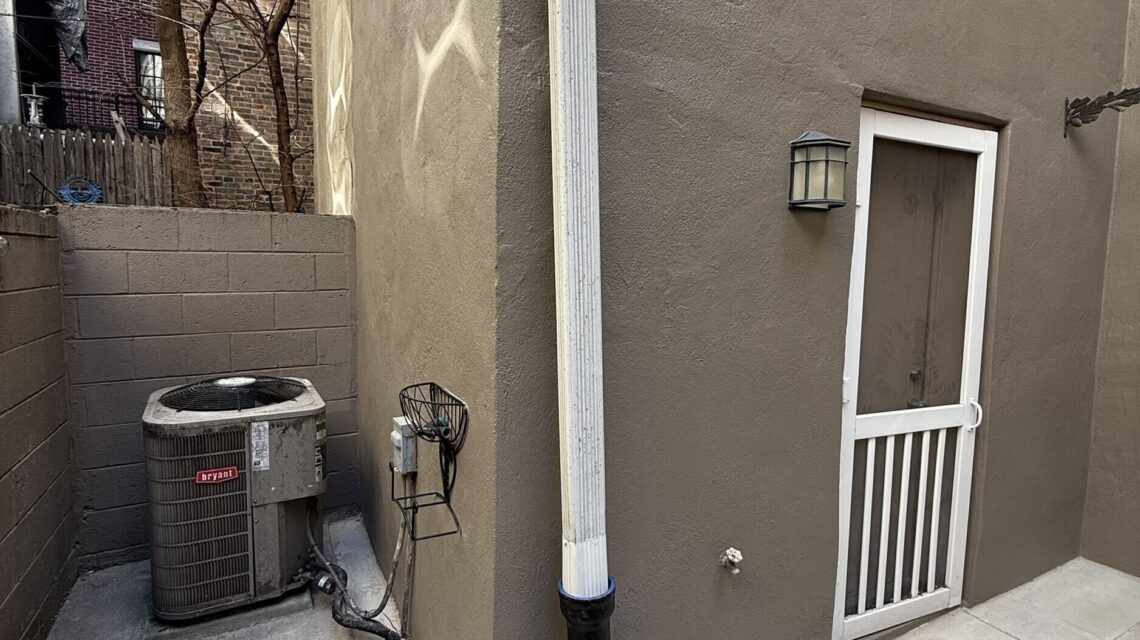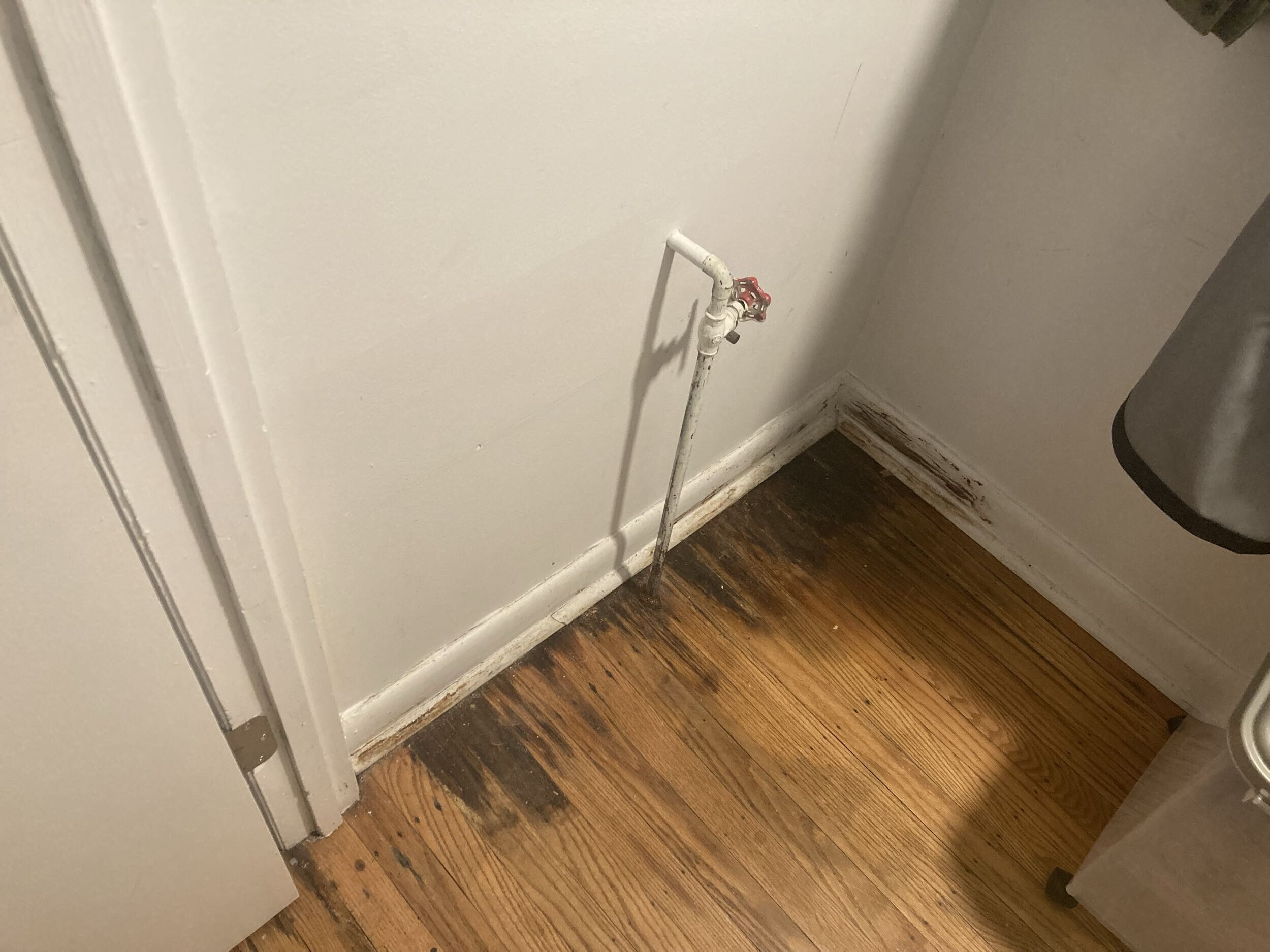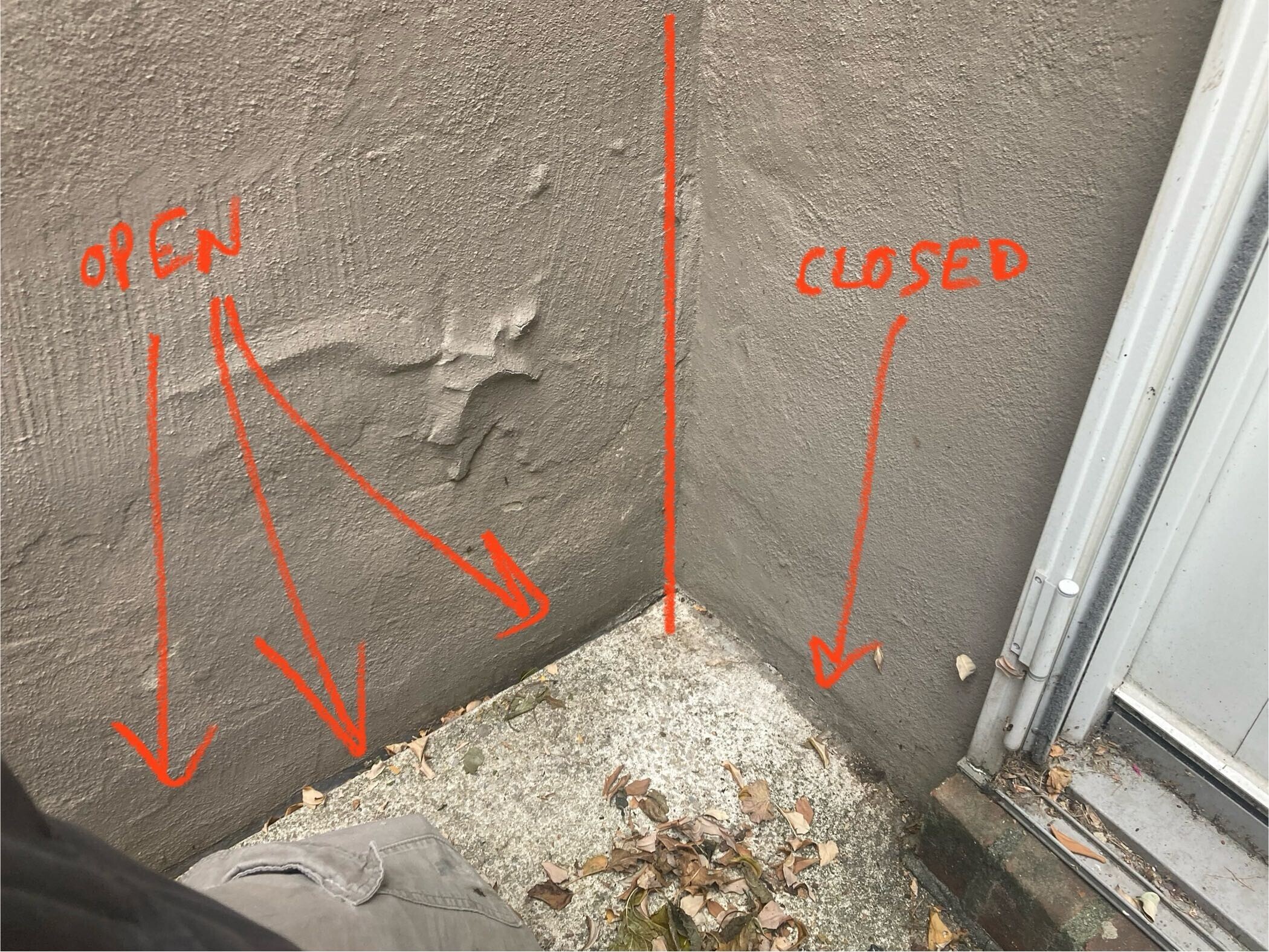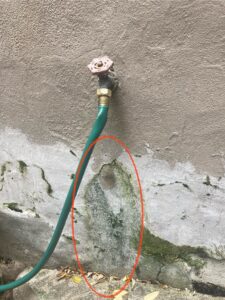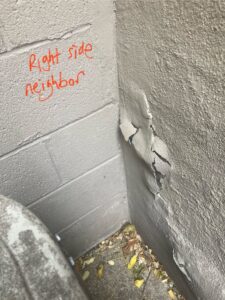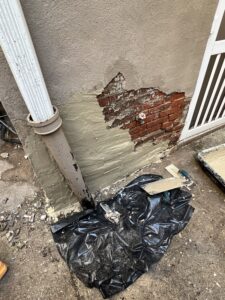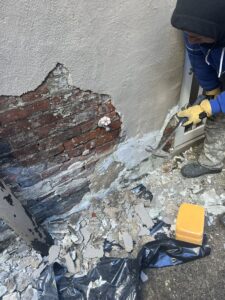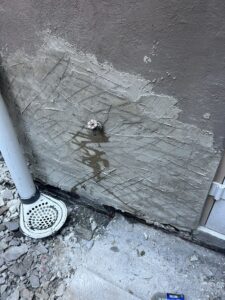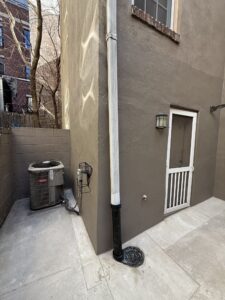The Leak: Maggie noticed soft, water-damaged floors near her basement entrance. The issue had supposedly been fixed before she bought the home, but signs of moisture remained.
The Detection: Dr. Leaks performed exterior and interior inspections with targeted water testing. A test near a stucco crack by the French doors triggered dripping in the basement, confirming the source.
The Repair: The team removed damaged concrete and drain components, sealed the foundation, installed a new drain system, patched the stucco, and applied waterproof coating to prevent future leaks.
In 2024, Center City Philadelphia homeowner Maggie contacted Dr. Leaks about a recurring moisture issue at the rear entrance to her basement. Although the previous owner said the issue was fixed and there had been no active leaks for nearly two years, Maggie remained concerned because the hardwood still felt soft and showed signs of water damage. The basement walls beneath the exterior patio also showed signs of crumbling and efflorescence, clear indicators of chronic water intrusion, even in the absence of visible water.
Maggie called Dr. Leaks to inspect the area and determine what was going on. Our team set up a Leak Detection appointment to identify the root cause of the issue. Although there was no visible active leak, the signs pointed to a deeper, hidden source. This type of case is especially tricky: water damage without precise water flow often signals a hidden vulnerability in the exterior structure. And with older stucco, dated drainage systems, and shared rowhome walls in play, we needed to take a deeper look.
Starting The Leak Detection Process
Our Leak Detection expert performed a thorough inspection of the interior and exterior areas around the rear basement entrance, then began targeted water testing to recreate the leak conditions and trace the path of intrusion.
The first test at the yard drain cover showed no interior results. Next, we moved slightly higher and tested at the top of the short cast iron drainpipe. Again, there was no visible water intrusion inside the home, but we did observe water breaching the drain enclosure outside, suggesting a possible crack or defect in that area.
It wasn’t until we tested the open stucco crack near the French doors that we saw immediate dripping inside the basement. That confirmed it: the gap was allowing stormwater to bypass the home’s exterior defenses and seep into the foundation. We also noted loose, deteriorated stucco at the base of the wall, extending to the neighbor’s side of the shared cinder block wall, which hinted at a broader issue with prior patchwork repairs and drainage.
Assessing the Damage
Once the leak location was confirmed, we evaluated the full extent of the damage. Inside, the hardwood floors were soft and discolored from prolonged exposure to moisture. In the basement, the wall directly beneath the backyard concrete pad was crumbling, with clear mineral deposits, a sign of ongoing saturation.
Outside, the stucco was cracked and brittle, especially around the drain area. The existing drain was an older, one-piece system prone to debris buildup and overflow. All signs pointed to a drainage design flaw that had slowly but steadily compromised the structure over time.
Rear Drain and Stucco Wall Leak Repair
With a plan in place, our team began a comprehensive repair to stop the leak and protect the home from future damage. We started by removing the concrete around the existing drain to access the foundation and underlying pipe. The damaged drainpipe was removed and replaced up to the interior PVC coupling. Loose stucco on the rear and right-side façades was cleared, and we sealed the foundation opening using hydraulic cement. To prevent pooling, we formed a sloped concrete “cricket” at the base of the wall to direct water away from the structure.
Next, we patched all affected stucco areas, filled visible cracks, and applied caulk around all high-risk points, windows, doors, and wall penetrations. A new cast-iron drain assembly was installed and tied into the interior system, with proper spacing from the wall. The foundation was waterproofed, the area was backfilled and re-poured, and the concrete was cured to finish the structural work.
Final Touches
To ensure the repair blended seamlessly into the home, we applied two to three coats of a best-match elastomeric stucco sealer to the rear and right-side façades. This not only unified the finish but also added a protective moisture barrier to the entire repaired zone. After completing the work, we cleared all tools, materials, and debris, then thoroughly swept and cleaned the area, both inside and out.
Water damage isn’t always apparent, which is what makes it so dangerous. Many homeowners attempt surface-level fixes or hire general contractors who lack expertise in leak repair. However, without identifying the actual source, those efforts often fail, leading to further damage and increased costs down the line.
Leak detection and repair is what we do. We understand Philadelphia homes, how they’re built, how water behaves, and where hidden vulnerabilities lie. That focus enables us to identify the real issue, address it effectively, and prevent it from recurring.
Don’t guess. Don’t wait. Call Dr. Leaks for expert Leak Detection and Leak Repairs that protect your home and your peace of mind.
Need to address a leak problem in your home? Book an Appointment today.

